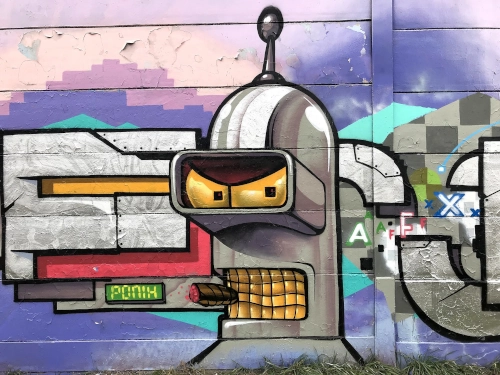It’s a form of art that involves creating visual or textual content on public surfaces, such as walls or buildings. Whether graffiti is considered art or vandalism depends on factors such as location, intent, and quality. Graffiti has a rich history, ranging from ancient civilizations to modern urban street culture, and has influenced mainstream art and culture.

Alright, let’s talk graffiti, but let’s flip the script a bit. Imagine it as “urban acupuncture.” Now, you might be wondering, what’s that? Well, it’s like this cool concept in city design. It’s all about making these small, smart changes to jazz up parts of the city that need a bit of love, much like how acupuncture relieves stress points in the body.
Graffiti is art waiting to be commissioned
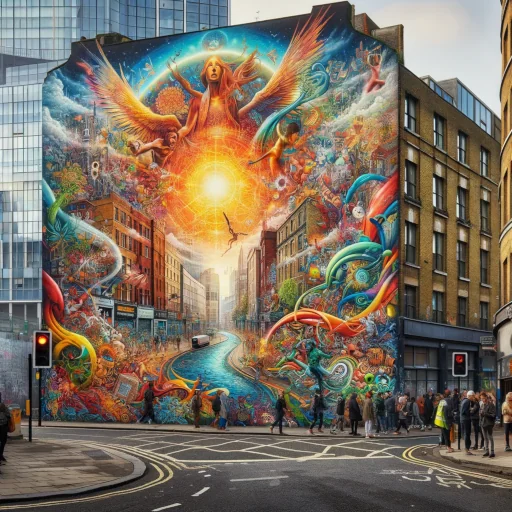
So, when you look at graffiti through this lens, it’s not just about spray cans and wall scribbles. It’s like artists are hitting precise points in the city, breathing new life into spots that most folks just walk by. They’re not just decorating; they’re waking up whole neighborhoods, getting people to notice things, talk, and think.
Graffiti as urban acupuncture
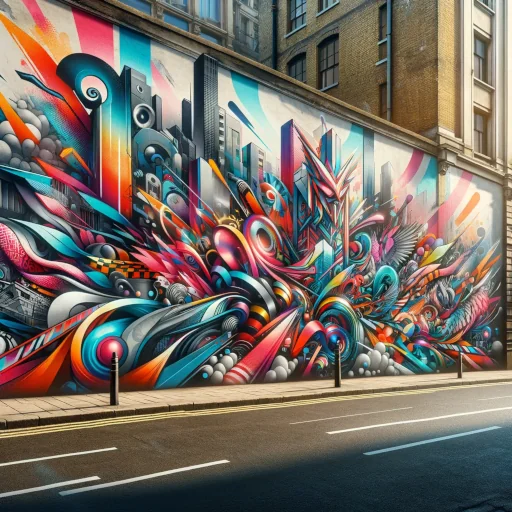
This way of seeing things isn’t just about whether it’s legal or looks good. It’s about what graffiti does for the city’s soul. These artists, they’re like the unsung heroes of urban spaces. They shake things up, start conversations, and sometimes, they’re making a point where it’s needed most. Even if they’re skating on the edge of what’s legal, they’re making a mark that counts. That’s the power of graffiti as urban acupuncture.
What is graffiti art, and how is it defined?
Graffiti art is a form of visual communication created by painting or drawing on walls, buildings, or other public spaces. It is often associated with urban areas and is used to express individual or group identity, social commentary, or political messages.
The definition of graffiti art is somewhat controversial, as it can be viewed as both an art form and a form of vandalism. Some consider it to be a legitimate form of artistic expression, while others view it as a destructive and illegal act of defacing public property.
The debate surrounding graffiti art often centers on factors such as the location, intent, and quality of the graffiti. In general, graffiti art is characterized by its use of bold colors, intricate designs, and a wide range of artistic techniques. It can be categorized into different types, such as tagging, throw-ups, pieces, and murals, each with its own unique style and purpose.
Is graffiti art or vandalism?
The question of whether graffiti is art or vandalism has been a contentious issue for many years. Some argue that graffiti is a form of vandalism because it often involves the defacement of public or private property without permission. Others argue that it is a legitimate form of artistic expression that should be celebrated and valued.
In recent years, there has been a growing recognition of the artistic value of graffiti, and many cities have begun to commission street art projects and legal graffiti walls. However, there are still many instances where graffiti is considered illegal and punished as such.
Factors such as the location, intent, and quality of the graffiti can also influence whether it is considered art or vandalism. Graffiti that is done with the intention of beautifying a neighborhood or expressing a political message is often viewed more positively than graffiti that is done simply to deface property.
The location, intent, and quality of graffiti play an important role in determining whether it is considered art or vandalism. Graffiti in public spaces, such as on buildings or trains, is often viewed as vandalism because it is done without permission and can be seen as damaging to public or private property. However, graffiti on legal walls or designated spaces, with permission from the property owner, can be viewed as art.
The intent behind the graffiti also matters. Graffiti done for personal expression, social commentary, or as a form of artistic expression can be seen as art. On the other hand, graffiti done to deface or damage property, to display gang symbols or hate speech, or to advertise illegal activities, is often seen as vandalism.
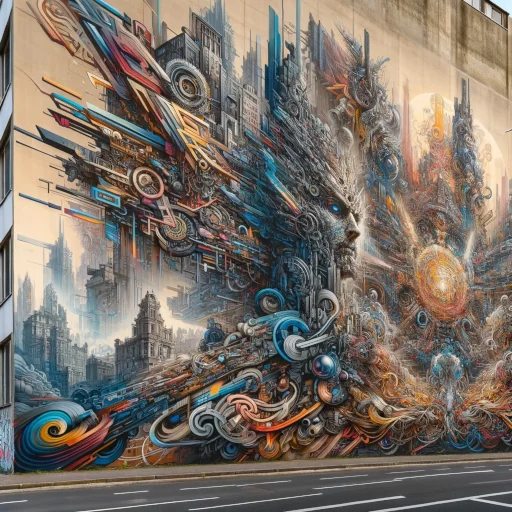
The quality of the graffiti can also be a factor. Highly skilled and intricate graffiti pieces that display artistic talent and creativity are often viewed as art, while sloppy or poorly executed graffiti can be seen as vandalism. Overall, the location, intent, and quality of the graffiti are important factors to consider when determining whether it is art or vandalism.
Ultimately, the debate over whether graffiti is art or vandalism is a complex one, and opinions on the matter are likely to continue to be divided for the foreseeable future.
| Year | Artist name | Name or description |
|---|---|---|
| Ancient times | Various | Graffiti found in Kom Ombo Temple, Egypt |
| Ancient times | Unknown | Pompeii graffito caricature of a politician, Villa of the Mysteries |
| Unknown | Unknown | Figure graffito at the Castellania, in Valletta |
| Ancient Rome | Various | Graffiti carved on walls and monuments |
| 79 AD | Unknown | Graffiti preserved in Pompeii after eruption of Vesuvius |
| 1960s-1970s | TAKI 183 | Name tag graffiti in New York City |
| 1980s | Keith Haring | Political and social graffiti art in New York City |
| 1980s-1990s | Jean-Michel Basquiat | Graffiti art in New York City |
| 1990s-present | Banksy | Political and social graffiti art in various locations worldwide |
What are types of graffiti?
Graffiti comes in many different forms, each with its own unique style and purpose. Some of the most common types of graffiti include tagging, throw-ups, pieces, and murals.
Tagging

Densely-tagged parking area in Århus, Denmark
Tagging is the most basic form of graffiti, typically consisting of a signature or symbol written in spray paint or marker. It is often done quickly and without much attention to detail, and is typically used to mark territory or make a statement.
Anyone interested in doing some graffiti with me? If so, feel free to tag along
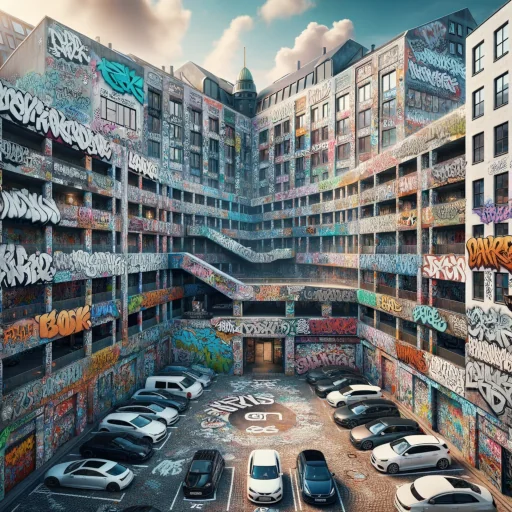
Tagging is one of the most basic forms of graffiti, typically consisting of a stylized signature or pseudonym painted in a single color. It often involves quickly writing or spraying a name or symbol on a surface, usually using a can of spray paint or a marker. Tagging is often seen as a form of self-promotion for the graffiti artist, who seeks to make their mark on public spaces.
While tagging is sometimes seen as a nuisance or a form of vandalism, some argue that it can be a way for marginalized communities to claim public space and express themselves creatively. I view tagging mostly as a form of vandalism and not creative expression or art. However, others argue that tagging can be a gateway to more complex and visually impressive forms of graffiti art, and that it should be viewed as a legitimate art form in its own right.
Throw-ups
Throw-ups are similar to tagging, but are slightly more elaborate. They typically consist of bubble letters filled in with solid color, and may include additional design elements such as arrows or crowns. Throw-ups are a type of graffiti characterized by quick, stylized lettering with minimal detail.
They are typically executed with spray paint and can be quickly applied to a surface, allowing the artist to work quickly and avoid detection. The term “throw-up” comes from the act of quickly vomiting up the spray paint onto the surface.
Despite their quick execution, throw-ups often incorporate complex color schemes and intricate lettering styles, showcasing the artist’s skill and creativity. While throw-ups are often viewed negatively by the general public, they are a common form of self-expression within the graffiti community.
Pieces
Pieces, short for “masterpieces,” are larger and more complex than throw-ups or tagging. They often involve intricate designs, detailed coloring, and a high degree of skill and craftsmanship. Pieces are typically created as a way for graffiti artists to showcase their talents and gain recognition within the graffiti community.
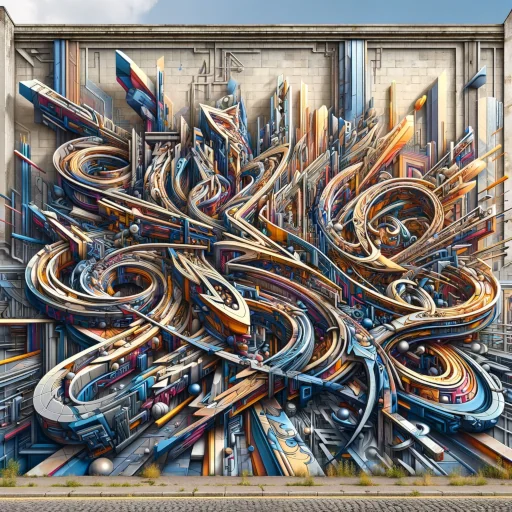
Pieces require more time, effort, and skill to create than tagging or throw-ups, and are often considered the pinnacle of graffiti art. They often include complex color schemes and shading, as well as 3D effects to make the work stand out.
Pieces are usually found on walls, trains, or other large surfaces in highly visible locations. Unlike tagging or throw-ups, which may be created quickly and without much planning, pieces are often the result of careful planning and execution by skilled graffiti artists.
Murals
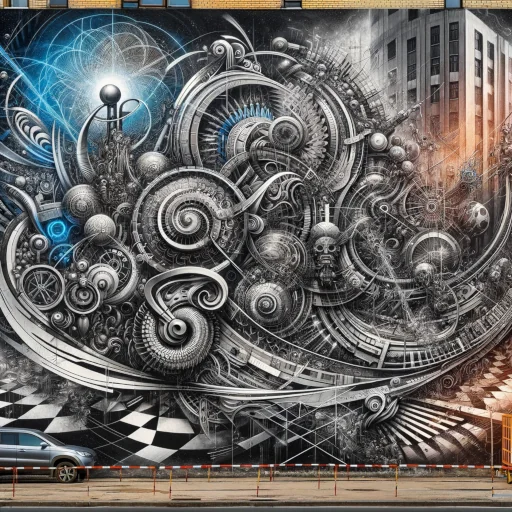
Murals are large-scale works of graffiti that often incorporate social and political messages, and may be commissioned by businesses or government organizations as a way to beautify public spaces. Murals can be highly detailed and complex, and may take many hours or even days to complete. Murals are large-scale works of art that cover an entire wall or building. They are often complex and intricate, featuring detailed images and vibrant colors.
Murals are usually created with spray paint or acrylic paint and are used to convey a message, tell a story, or simply beautify a space. Unlike other forms of graffiti, murals are often commissioned by businesses or organizations, or created with permission from property owners. They are generally more accepted by the public and can even be considered a legitimate form of public art. Murals can also serve as a form of cultural expression and community building, as they often depict themes that are relevant to the local community.

Overall, the different types of graffiti reflect the diversity and creativity of the artists who create them, and can serve as a form of self-expression and social commentary. However, the legality and social acceptance of graffiti varies depending on the location and context in which it is created.
The history of graffiti art, and where did it originate?
“People say graffiti is ugly, irresponsible and childish… but that’s only if it’s done properly.”
― Banksy, Wall and Piece
Graffiti has a long and varied history, with roots that can be traced back to ancient civilizations. Some of the earliest forms of graffiti were found in ancient Greek and Roman cities, where messages and political slogans were scrawled on walls. In modern times, graffiti as an art form began to gain prominence in the 1960s and 1970s in urban areas of the United States.
One of the earliest known graffiti artists is Cornbread, a Philadelphia teenager who began tagging his nickname all over the city in the late 1960s. The 1970s saw the emergence of other graffiti artists, such as TAKI 183 in New York City, who became famous for his distinctive tag. By the 1980s, graffiti had spread throughout the world and had become a global phenomenon.
Throughout its history, graffiti has been associated with rebellion and counter-culture movements. Graffiti artists often use their work as a form of protest against societal norms and as a way to express their individuality. However, graffiti has also been criticized for its association with vandalism and property damage.
Ancient Graffiti
Graffiti has been found in various forms throughout history, from ancient Greece and Rome to the ancient Mayan city of Tikal. In Pompeii, Italy, for example, graffiti has been found on walls and buildings, often serving as political or personal messages.
During the Renaissance, graffiti-like marks were made by artists as preparatory sketches for larger works. In the 20th century, graffiti emerged as a form of urban street art, often associated with subcultures like hip-hop and punk. Graffiti was often used by these subcultures to make political and social statements, and as a way of marking territory or leaving a personal message.
What is the oldest graffiti ever found?
The Vindolanda excavation site in Northern England has yielded some of the oldest graffiti in the world, dating back over 1,400 years. The graffiti was found in an ancient Roman fort and includes a range of inscriptions and drawings, including personal messages, political slogans, and even a crude cartoon of a man with a large nose. The Vindolanda Trust, which manages the site, has made efforts to preserve the graffiti as a historical and cultural artifact.
Kom Ombo Temple

Ancient graffito in the Kom Ombo Temple, Egypt
The Kom Ombo Temple in Egypt is home to some of the earliest known examples of graffiti, dating back to the Greco-Roman period of ancient Egyptian history. These graffitos, or inscriptions made by scratching or carving into the stone walls of the temple, include depictions of animals, boats, and human figures, as well as messages in both Greek and Egyptian hieroglyphics.
One of the most famous graffitos in the Kom Ombo Temple is a carving of a sketch of a donkey and a rider with the Greek inscription “Borion” and a date corresponding to the year 139 BC. It is believed to have been created by a soldier stationed at the temple, and it offers a rare glimpse into the lives and thoughts of ordinary people during this time period.
These ancient graffitos serve as a reminder that the act of marking or inscribing one’s presence on a public space is not a modern invention, and that graffiti has a rich and complex history that extends back thousands of years.
Ancient Pompeii graffito
One of the earliest known examples of graffiti can be found in the ancient city of Pompeii in Italy, which was famously destroyed by the eruption of Mount Vesuvius in 79 AD. In the Villa of the Mysteries, a house located outside the city walls, there is a well-preserved graffito of a caricature of a politician.
This graffito was likely created by someone who opposed the politician’s views and wanted to mock or satirize him. It provides a fascinating insight into the political climate of the time and shows that graffiti has been used as a form of political expression for thousands of years.
The graffito also serves as a reminder that while the medium may have changed over time, the desire to express oneself through public art has remained a constant throughout human history.
Castellania, in Valletta
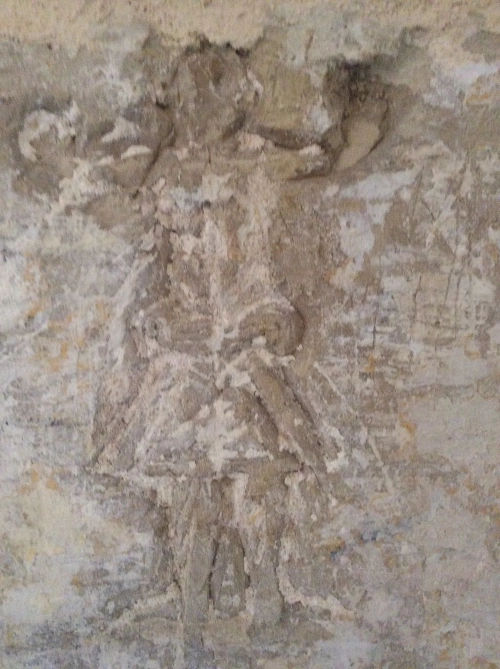
Figure graffito, similar to a relief, at the Castellania, in Valletta
The Castellania in Valletta, Malta, features a figure graffito that is similar to a relief. This graffito was created during the mid-18th century, and it depicts a human figure with outstretched arms. The figure appears to be standing on a pedestal or platform, and there are floral motifs on either side of the figure. The style of the graffito is similar to that of Baroque architecture, which was prevalent in Malta during this time period.
The significance and meaning of this graffito is not entirely clear, but it is believed to be related to the legal and administrative functions of the Castellania, which was a court of law and a medical center. The figure graffito is an interesting example of the use of graffiti as a decorative element in a public building, and it provides a glimpse into the artistic tastes and styles of the mid-18th century in Malta.
Ancient Romans
Ancient Romans were known for carving graffiti on walls and monuments as a form of political and social expression. These inscriptions, known as “graffiti” in Italian, could be found throughout the Roman Empire, from Pompeii to the walls of the Colosseum in Rome.
Many of these graffiti were carved by ordinary citizens who wanted to leave their mark on history or express their opinions about the ruling class. Some graffiti were simple messages, while others were more elaborate, including caricatures of political figures or depictions of gladiatorial contests.
Graffiti was often a means of political expression, with citizens using it to criticize or support political candidates, or to voice their dissent against the government. The study of ancient graffiti provides valuable insights into the daily life and attitudes of ordinary people in ancient Rome.
Graffiti in Pompeii
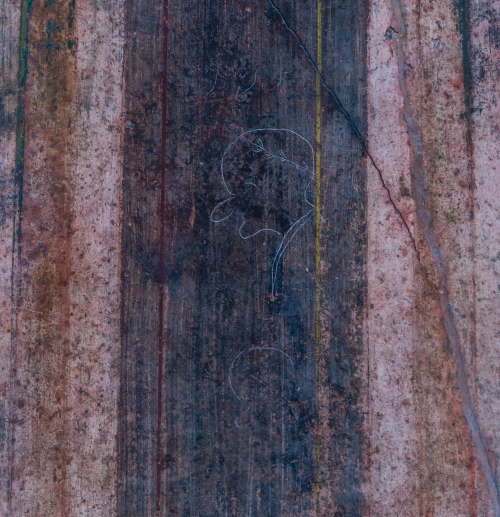
Ancient Pompeii graffito caricature of a politician.Villa of the Mysteries
The eruption of Mount Vesuvius in 79 AD preserved a wealth of graffiti in the ancient city of Pompeii, providing unique insights into daily life in ancient Rome. The graffiti covers a wide range of subjects, including Latin curses, magic spells, declarations of love, insults, alphabets, political slogans, and famous literary quotes. Some of the graffiti can be traced back to specific individuals and offer glimpses into the personal lives of ordinary people. The Pompeii graffiti is a testament to the enduring human desire to leave one’s mark on the world and to communicate with future generations.
How has graffiti evolved over time?
Over time, graffiti has evolved from simple markings and scrawls on walls to elaborate and intricate pieces of art. In the 1960s and 70s, graffiti began to emerge as a form of self-expression in urban areas, particularly in New York City. These early forms of graffiti were often considered vandalism, and were associated with gangs and criminal activity.
However, as graffiti became more popular, it also became more complex and artistic. Artists began to experiment with different styles and techniques, using spray paint, stencils, and other tools to create large-scale murals and pieces. This evolution of graffiti also spread to other parts of the world, with graffiti scenes emerging in cities like London, Paris, and Berlin.
“Art is an evolutionary act. The shape of art and its role in society is constantly changing. At no point is art static. There are no rules.”
― Raymond Salvatore Harmon, BOMB: A Manifesto of Art Terrorism
Today, graffiti is recognized as a legitimate form of public art in many cities, and has even been embraced by mainstream culture. Many graffiti artists have gained recognition in the art world and have been commissioned to create public murals and installations. Despite this acceptance, graffiti still remains controversial and illegal in many places, and the debate over its artistic and cultural value continues.
Who are famous graffiti artists?
Graffiti art has produced many notable artists whose works have gained recognition in the art world. One of the most famous and elusive is Banksy, a British street artist who creates politically-charged and thought-provoking works that often use stenciling techniques. His works have appeared on walls, buildings, and even the West Bank barrier in Palestine.
Keith Haring, an American artist, was known for his iconic and colorful murals that often featured figures in motion, and he used his art as a means of advocating for social justice issues. Jean-Michel Basquiat, also American, began his career as a street artist in New York City and gained fame in the 1980s for his neo-expressionist style that blended graffiti and fine art.
These artists, along with many others, have left an indelible mark on the world of graffiti art, with their works being celebrated and sought-after by collectors and art enthusiasts alike.
Banksy

Photo of “Banksy” art taken by Matt Whitby in Brick Lane, East End. 2004.
Banksy is a pseudonymous British street artist known for his politically charged and satirical works. He gained notoriety in the early 2000s for his stenciled murals and installations that appeared in cities around the world, often featuring social commentary and subversive humor. His identity remains unknown, adding to his mystique and appeal.
Some of his notable works include the “Girl with Balloon” mural, which partially self-destructed after being sold at auction, and the “Flower Thrower” stencil, which depicts a masked figure hurling a bouquet of flowers like a Molotov cocktail. Banksy’s work has been the subject of numerous exhibitions and documentaries, and he continues to inspire and challenge the art world with his provocative and thought-provoking pieces.
What is the most famous piece of graffiti?
Banksy’s “Girl with Balloon,” Keith Haring’s “Radiant Baby,” and Jean-Michel Basquiat’s various works such as “Untitled (Skull)” and “Hollywood Africans.”
Keith Haring

Haring at his last exhibition at Galerie 1900-2000/La Galerie de Poche in Paris on January 15, 1990.
Keith Haring was an American artist and social activist known for his iconic and colorful imagery, which often conveyed social messages. Haring first gained recognition for his graffiti-inspired works in the New York City subway in the 1980s, which he saw as a way to bring art to the masses. His style was characterized by bold lines and vibrant colors, often featuring figures in motion, such as dancing or crawling babies, barking dogs, and flying saucers.
Haring’s works also frequently addressed social issues, such as racism, homophobia, AIDS awareness, and nuclear disarmament. He used his art as a platform to express his political and social views, and to raise awareness about important issues affecting society. Haring’s works have been exhibited in galleries and museums worldwide and have become highly collectible. Today, his legacy continues to inspire artists and activists around the world.
Jean-Michel Basquiat
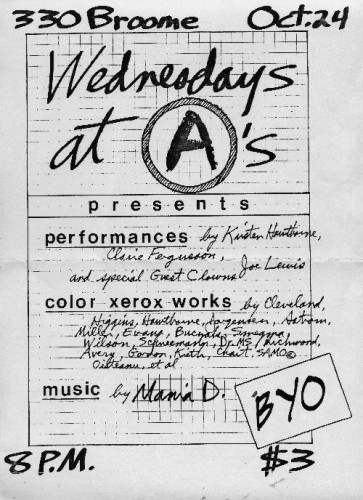
SAMO Xerox poster (1979)
Jean-Michel Basquiat was an American artist born in Brooklyn, New York, in 1960. He started as a graffiti artist in the late 1970s under the pseudonym SAMO. In the 1980s, he transitioned to fine art, and his paintings gained critical acclaim for their combination of expressive and poetic qualities with social commentary on issues of race, politics, and identity.
Basquiat’s works often feature fragmented images and text, incorporating a mix of art historical references, pop culture, and African American cultural motifs. His use of bold colors, gestural brushstrokes, and scribbled lines creates a raw and powerful energy in his paintings.
Some of his notable works include “Untitled (Skull)” (1981), “The Death of Michael Stewart” (1983), and “Hollywood Africans” (1983). Basquiat’s art has been exhibited in major museums around the world, and his legacy has continued to inspire contemporary artists and musicians. He died in 1988 at the age of 27 from a drug overdose, leaving behind a significant impact on the art world.
What are the controversies surrounding graffiti art?
Graffiti art has always been a controversial form of expression, and has been subject to numerous debates, discussions, and legal issues. One of the main controversies surrounding graffiti art is whether it should be considered vandalism or a legitimate form of art. Some people argue that graffiti is simply a form of property damage, as it often involves defacing public or private property without the owner’s consent.
Others believe that graffiti is a form of artistic expression and a means of communicating ideas, opinions, and messages to the public. Many graffiti artists use their art to express political and social messages, calling attention to issues like racism, inequality, and environmental destruction.
Another point of controversy is the issue of freedom of expression. Graffiti artists often face legal consequences for their work, as their art is considered illegal in many parts of the world. Some argue that these restrictions are a violation of their right to express themselves, and that graffiti art should be protected under the freedom of speech laws.
Cultural appropriation is another contentious issue in the graffiti art world. Many graffiti artists draw inspiration from different cultures and traditions, but there is a fine line between paying homage and appropriating cultural symbols or imagery. Some argue that the use of cultural imagery without proper context or understanding is disrespectful and offensive.
How has graffiti art been used to express political and social messages?
Graffiti art has been used as a powerful tool for political and social expression throughout history. From the political messages of ancient graffiti in Pompeii to modern-day street art, graffiti has served as a form of protest, dissent, and social commentary.
One example of graffiti being used to express political messages is during the apartheid era in South Africa. Graffiti was used as a form of resistance against the government’s oppressive policies. Graffiti artists would create murals and street art that depicted messages of anti-apartheid, human rights, and equality. Some of the most iconic images from that time include the graffiti mural of Nelson Mandela in the Soweto township.
Graffiti has also been used to raise awareness about social issues such as climate change, poverty, and inequality. The street artist Banksy, for example, has created several pieces of artwork that critique consumerism, government surveillance, and war. His pieces are often political in nature and are designed to provoke thought and spark conversation.
Moreover, graffiti has also been used as a means of community building and empowerment. Graffiti projects in underprivileged areas, for instance, have helped to beautify neighborhoods and give voice to local issues. By creating public art and murals, communities can come together and work towards a common goal. In many cases, this has led to a sense of pride and ownership in the community.
How is graffiti viewed in different parts of the world?
Graffiti art is viewed differently in different parts of the world, ranging from criminal activity to an accepted form of art. In some countries, such as the United States, graffiti is generally viewed as vandalism and carries legal consequences. However, in other parts of the world, such as Europe and South America, graffiti is more widely accepted as a legitimate form of public art.
In some cases, local governments have even designated certain areas or walls as legal graffiti spaces where artists can create murals without fear of prosecution. In countries like Brazil and Mexico, graffiti has a long history of being used to express political and social messages, and is often seen as a way to protest against government corruption and social injustice.
In countries where graffiti is viewed as a criminal act, there are still some who argue that it is a form of artistic expression and should be protected as such. Advocates of graffiti art argue that it provides an outlet for marginalized voices and can be a powerful tool for social commentary and political dissent.
Despite these differing viewpoints, it is clear that graffiti art has gained significant cultural and artistic significance over the years, and its influence can be seen in everything from fashion to advertising to mainstream art galleries.
How has graffiti art influenced mainstream art and culture?
Graffiti art has had a significant influence on mainstream art and culture. It has challenged traditional notions of what constitutes art and has given a voice to underrepresented and marginalized communities. Graffiti art has also been incorporated into advertising, fashion, and interior design, with many businesses seeking out graffiti artists to create murals and installations for their spaces.
One of the most notable examples of graffiti art’s influence on mainstream culture is the emergence of streetwear fashion. Graffiti artists, such as Keith Haring and Jean-Michel Basquiat, were early adopters of streetwear style, which has since become a major fashion trend. Many streetwear brands feature graffiti-inspired designs, and some graffiti artists have even collaborated with fashion brands to create collections.
Graffiti art has also influenced the music industry, particularly in hip-hop culture. Graffiti and hip-hop share a common origin in urban communities, and graffiti art has been a visual representation of hip-hop’s message of social and political activism. Many hip-hop artists have used graffiti imagery in their album covers, music videos, and clothing lines.
Moreover, graffiti art has influenced the contemporary art world, with many artists incorporating graffiti techniques and styles into their work. Some museums and galleries have even showcased graffiti art exhibitions, recognizing its cultural and artistic significance.
What are some cities that have embraced graffiti art as a legitimate form of public art?
Several cities and locations around the world have embraced graffiti art as a legitimate form of public art. One such location is the Wynwood Walls in Miami, Florida, which is a designated area for street art and graffiti. Another example is the city of Berlin, Germany, where the East Side Gallery features murals painted on a remaining section of the Berlin Wall.
In Melbourne, Australia, the Hosier Lane and its surrounding alleys are covered in colorful graffiti, and the city government supports the art form. The city of Valparaíso, Chile, is known for its vibrant street art scene, with murals covering the city’s buildings and walls. Other cities, such as Lisbon, Portugal, and Bogotá, Colombia, have also embraced graffiti art and incorporate it into their cultural landscapes.
What is the future of graffiti art?
Graffiti art has come a long way from being viewed as a form of vandalism to gaining recognition as a legitimate form of art. As the art form continues to evolve, it is likely to take on new forms and expand into new spaces.
One trend that is likely to continue is the incorporation of technology into graffiti art. With the rise of digital art and projection mapping, graffiti artists are finding new ways to create large-scale works that interact with their environments in unique and dynamic ways.
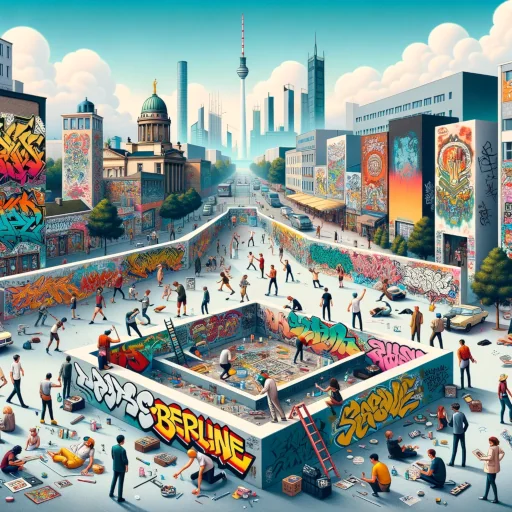
Another trend is the increasing acceptance of graffiti art as a form of public art. Cities like Berlin, Melbourne, and São Paulo have embraced graffiti art as a legitimate form of public art and have designated specific areas for artists to create their works. As more cities follow suit, it is likely that graffiti art will continue to gain acceptance and become a more widely recognized form of artistic expression.
However, there are also challenges and controversies that graffiti art may face in the coming years. As gentrification and commercialization of urban areas continue, the spaces available for graffiti art may become increasingly limited. Additionally, the legal status of graffiti art may continue to be a point of contention, with some cities cracking down on graffiti artists even in designated areas.
Despite these challenges, the future of graffiti art looks bright. As the art form continues to evolve and gain acceptance, it is likely to inspire new generations of artists and influence mainstream art and culture in new and exciting ways.
What are some of the new challenges and controversies for graffiti art?
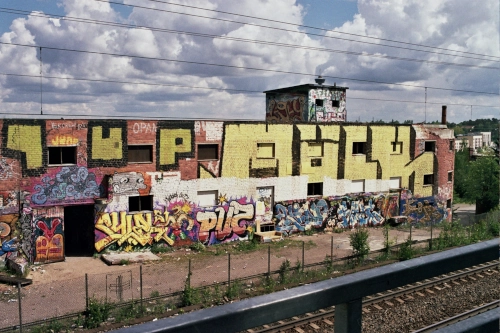
An abandoned roof felt factory with graffiti in Santalahti, Tampere, Finland
Graffiti art continues to face challenges and controversies as it gains more recognition in the art world. One ongoing issue is the tension between the illegality of graffiti and the desire for public art. Many cities have implemented programs and legal walls for graffiti artists to create their work in a sanctioned manner, but there are still instances of illegal graffiti that can lead to property damage and legal consequences.
Another controversy is the issue of cultural appropriation. Graffiti art has been used as a form of cultural expression, but there are concerns about non-Black or non-Latinx artists appropriating and commodifying styles and symbols associated with those cultures. Some argue that this type of appropriation perpetuates harmful stereotypes and erases the history and context behind the original art.
Graffiti art continues to evolve and expand. With advances in technology, new mediums and techniques have emerged, such as digital graffiti and augmented reality graffiti. As society continues to grapple with issues of social justice and systemic inequalities, graffiti art is likely to remain an important tool for artists to express their messages and challenge the status quo.
FAQ
Q: Is graffiti considered an art?
A: Yes, graffiti is widely considered a form of art. It is an expression of creativity and imagination, often used to convey social or political messages. It’s a form of street art that has gained significant recognition and acceptance in the art world and in popular culture.
Q: Why is graffiti considered an art?
A: Graffiti is considered an art because it embodies many of the same elements as traditional art forms: it involves skill, creativity, and often conveys a message or emotion. Many graffiti pieces are intricate and visually impressive, and they can transform urban spaces, much like how a painting transforms a blank canvas.
Q: Is graffiti considered art or vandalism?
A: The distinction between graffiti as art or vandalism often depends on permission. If a graffiti piece is created with permission on a legal surface, it’s generally considered art. If it’s created without permission, it can be seen as vandalism because it may involve defacing private or public property. However, some argue that even without permission, graffiti can still be considered a form of art due to its expressive and creative elements.
Q: Why do people say graffiti is not art?
A: Those who argue that graffiti is not art often cite its association with illegal activity and property damage. Because graffiti can be done without permission and may deface buildings or public spaces, it is sometimes seen as vandalism rather than a legitimate form of artistic expression. Others may argue that it lacks the formal training or recognition associated with traditional art forms. However, this view is changing as graffiti continues to gain acceptance and recognition in the art world.
References
By Methem (Mikko J. Putkonen) – Own work, CC0, commons.wikimedia.org/w/index.php?curid=20077154
By User:Continentaleurope, CC BY-SA 3.0, commons.wikimedia.org/w/index.php?curid=46826378
By Jebulon – Own work, CC0, commons.wikimedia.org/w/index.php?curid=45762296
By I, Rémih, CC BY-SA 3.0, commons.wikimedia.org/w/index.php?curid=7229768
By Dudva – Own work, CC BY-SA 4.0, commons.wikimedia.org/w/index.php?curid=67369494
By Villy Fink Isaksen – Own work, CC BY 3.0, commons.wikimedia.org/w/index.php?curid=5643283
By Matt.whitby at English Wikipedia – Transferred from en.wikipedia to Commons by Liftarn using CommonsHelper., Public Domain, commons.wikimedia.org/w/index.php?curid=11894438
By Real OB459 – Own work, CC BY-SA 4.0, commons.wikimedia.org/w/index.php?curid=117036276
By Ganskörperfutter – Own work, CC BY-SA 3.0, commons.wikimedia.org/w/index.php?curid=18853135
